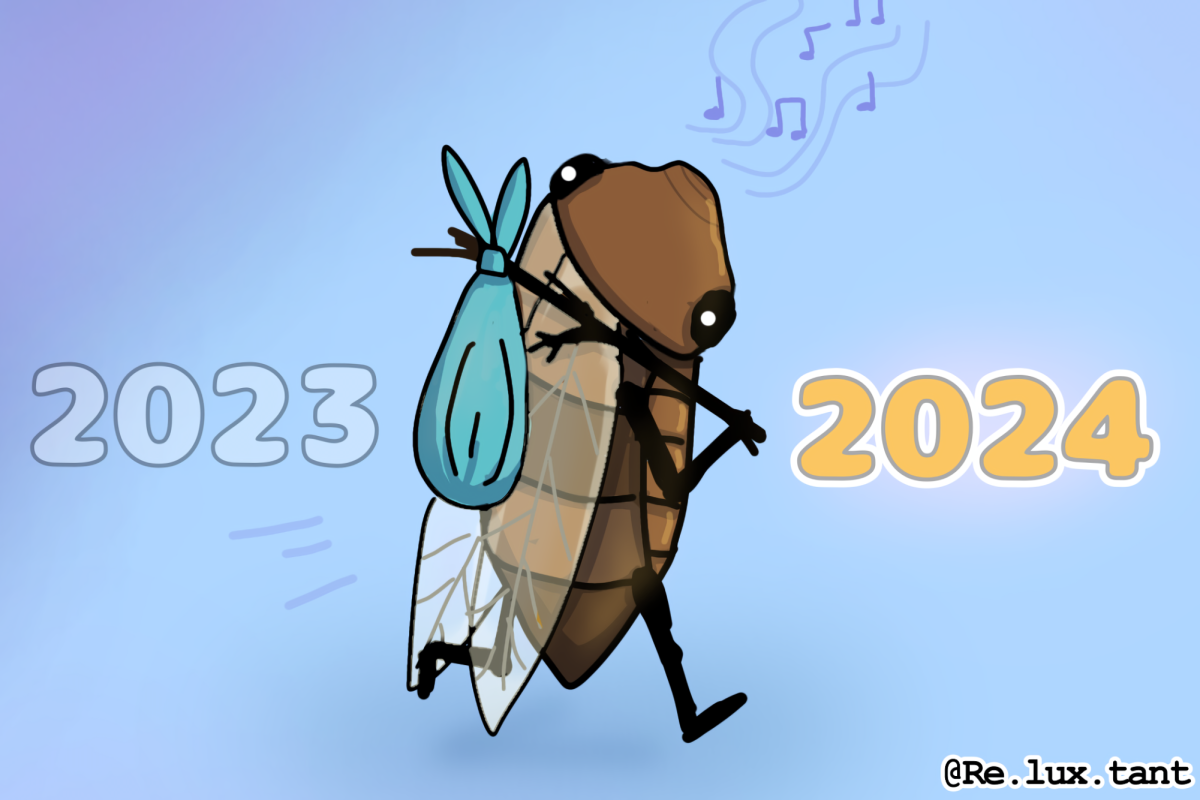Beginning this spring across the Midwest, two broods of cicadas on 13- and 17-year emergence cycles will surface at the same time in a union that hasn’t happened in over two centuries.
This year’s cicadas, scientifically named Brood XIII and XIX, will both begin to emerge in both Illinois and the southeastern United States. Both of these populations surface in parts of southern and northern Illinois, which makes central Illinois a prime location for this year’s mixing of cicada groups.
Kacie Athey, assistant professor in LAS and the University’s specialty crops entomologist, says that this year will yield more cicadas than in years past because of the simultaneous emergence of these two different cicada broods, or yearly classes.
“2024 is special because we have a set of 17-year cicadas and a set of 13-year cicadas coming out,” Athey said. “They don’t typically come out together — the last time that we saw a simultaneous emergence of two broods of periodical cicadas was 1803.”
The “periodical” cicadas Illinoisians will see in 2024 differ from the annual “dog-day” cicadas that appear in the Midwest and eastern and southeastern United States. Dog-day cicadas typically have shorter lifespans and have darker coloring than periodicals.
Get The Daily Illini in your inbox!
Athey added that periodical cicadas emerge on different yearly cycles depending on their brood, making two broods syncing in appearance a rare occurrence.
“Periodical cicadas are special,” Athey said. “The entire population of those cicadas all come out at once, and they all come out on either a 13-year cycle or a 17-year cycle.”
Christopher Dietrich, state entomologist at the Illinois Natural History Survey, said that the once-in-a-lifetime phenomenon will begin once soil temperatures become warm enough for cicada emergence.
“Normally, periodical cicadas come out anywhere between mid-May and early June,” Dietrich said. “The exact timing of the emergence depends on the soil temperature which has to get above a certain point before it triggers the cicadas to actually emerge.”
Dietrich adds that the Midwest’s central location in the United States and the large variety of both flatlands and forests is why many cicada broods are located in or close to Illinois.
“These cicadas do kind of require mature forest areas,” Dietrich said. “There actually are a lot of large parts of our state that don’t have periodical cicadas because they were originally tall grass prairie, and they’re now mostly corn and soybean fields. So you’re not going to see periodical cicadas (in) those kinds of habitats.”
While cicadas can be an intimidating sight for those with a fear of bugs, Athey said that cicadas pose no real threat or potential change to the areas they emerge in. However, they can potentially be a pest for local fruit growers.
“As far as environmental impact, generally speaking, it’s pretty neutral aside from a flush of fertilizer when they all come out at once and then, you know, die,” Athey said. “But generally speaking, they’re neutral. They’re just a really cool biological phenomenon.”









